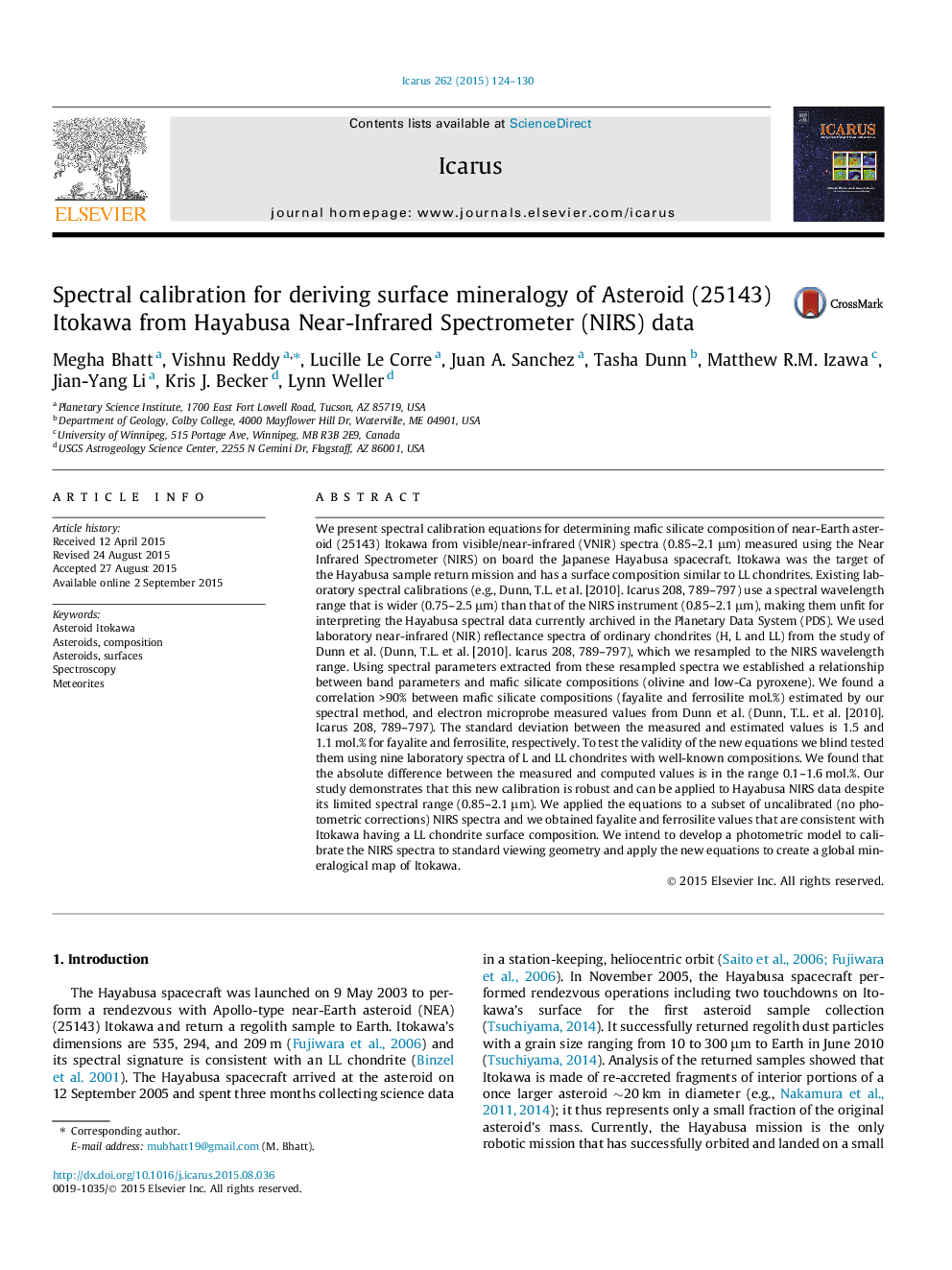| Article ID | Journal | Published Year | Pages | File Type |
|---|---|---|---|---|
| 1772984 | Icarus | 2015 | 7 Pages |
Abstract
We present spectral calibration equations for determining mafic silicate composition of near-Earth asteroid (25143) Itokawa from visible/near-infrared (VNIR) spectra (0.85-2.1 μm) measured using the Near Infrared Spectrometer (NIRS) on board the Japanese Hayabusa spacecraft. Itokawa was the target of the Hayabusa sample return mission and has a surface composition similar to LL chondrites. Existing laboratory spectral calibrations (e.g., Dunn, T.L. et al. [2010]. Icarus 208, 789-797) use a spectral wavelength range that is wider (0.75-2.5 μm) than that of the NIRS instrument (0.85-2.1 μm), making them unfit for interpreting the Hayabusa spectral data currently archived in the Planetary Data System (PDS). We used laboratory near-infrared (NIR) reflectance spectra of ordinary chondrites (H, L and LL) from the study of Dunn et al. (Dunn, T.L. et al. [2010]. Icarus 208, 789-797), which we resampled to the NIRS wavelength range. Using spectral parameters extracted from these resampled spectra we established a relationship between band parameters and mafic silicate compositions (olivine and low-Ca pyroxene). We found a correlation >90% between mafic silicate compositions (fayalite and ferrosilite mol.%) estimated by our spectral method, and electron microprobe measured values from Dunn et al. (Dunn, T.L. et al. [2010]. Icarus 208, 789-797). The standard deviation between the measured and estimated values is 1.5 and 1.1 mol.% for fayalite and ferrosilite, respectively. To test the validity of the new equations we blind tested them using nine laboratory spectra of L and LL chondrites with well-known compositions. We found that the absolute difference between the measured and computed values is in the range 0.1-1.6 mol.%. Our study demonstrates that this new calibration is robust and can be applied to Hayabusa NIRS data despite its limited spectral range (0.85-2.1 μm). We applied the equations to a subset of uncalibrated (no photometric corrections) NIRS spectra and we obtained fayalite and ferrosilite values that are consistent with Itokawa having a LL chondrite surface composition. We intend to develop a photometric model to calibrate the NIRS spectra to standard viewing geometry and apply the new equations to create a global mineralogical map of Itokawa.
Related Topics
Physical Sciences and Engineering
Earth and Planetary Sciences
Space and Planetary Science
Authors
Megha Bhatt, Vishnu Reddy, Lucille Le Corre, Juan A. Sanchez, Tasha Dunn, Matthew R.M. Izawa, Jian-Yang Li, Kris J. Becker, Lynn Weller,
